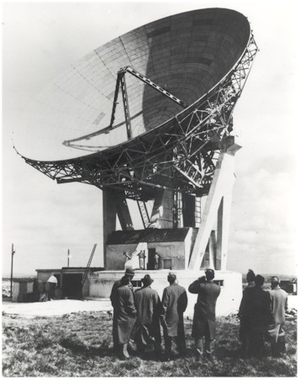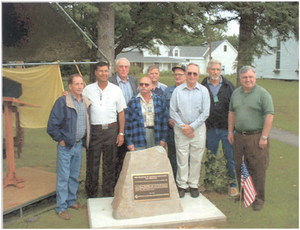NASA Launches Telstar
This article was initially published in Today's Engineer on July 2012
Four thirty-five in the morning is not the most likely time for a historic event. But on 10 July, 1962 that was the time in Cape Canaveral, Florida when NASA launched AT&T’s Telstar, the world’s first active communications satellite. Telstar is an IEEE Milestone
Science fiction writer Arthur C. Clarke conceived active communications satellites in 1945. Active satellites would not simply reflect radio signals transmitted from ground stations but amplify and retransmit them.
Next, John Pierce of Bell Telephone Laboratories concluded these satellites were a real possibility worth a major effort by the labs. In 1955 he sketched the possibilities for satellite communications in a scientific paper. Two years later, the Russians launched Sputnik, and the space race began. The National Aeronautics and Space Administration (NASA) soon began launching American satellites.
Pierce, meanwhile, had convinced the management at AT&T, Bell Labs’ parent, to proceed. Most of the components for a successful experiment—transistors, solar cells, traveling wave guide tubes, horn-reflector antennas and the like–already existed in January 1960 when AT&T and NASA agreed to a joint project. AT&T would design and construct an experimental satellite and pay NASA to launch it. It would be the first privately sponsored space launch.
Eugene O’Neill led a team at Bell Telephone Laboratories that designed Telstar, a 34.5 in (87 cm), 170 lb (77 kg) satellite that fit on top of NASA’s Delta rocket. Telstar would receive microwave radio signals from a ground station, amplify them, and rebroadcast them. The team calculated an orbital path that the rocket could reach, and located an ideal site for the US ground station near Andover, Maine, far from the urban clutter of radio signals. Here they built a massive 160 ft (49 m) diameter horn antenna, protected from the elements by a radome that was the larger than any previous air-supported structure. Due to the limits of the Delta rocket, Telstar was not placed in a higher geosynchronous orbit, but rather in a lower orbit where it circled the globe. O’Neill and his team planned experiments. They enlisted the British and French telecommunications authorities as partners who then built and staffed ground stations at Goonhilly Downs and Pleumeur-Bodou on their respective western coasts. And on that morning of 10 July 1962, they held their breaths as the countdown led to a perfect blast off. Telstar was in space.
That evening, AT&T President Frederick Kappel picked up a phone in Andover and placed a call. Vice President Lyndon Johnson in Washington, D.C., answered. The call was relayed via Telstar. It was the first telephone call ever transmitted through space. Within 30 minutes, Telstar produced several other firsts—successfully transmitting faxes, high-speed data, and most notably, both live and taped television. Portions of the television transmission, a shot of the American flag in outside the Andover station, were successfully received in France—the first live transmission of television across an ocean; no previous medium had sufficient bandwidth.
The next day, viewers throughout the United States saw live and taped television from both France and Britain. More elaborate television demonstrations followed later that month, including countries from Norway to Italy sending programs westward, and the United States sending more programs east, including one of President John Kennedy’s press conferences. The French transmitted among other things, singer Yves Montand, and the British contributed a cooking show.
Telstar went out of service on 21 February 1963, its mission accomplished. In August 1962, the U.S. Congress passed a law establishing a single private corporation, Comsat, to assume the U.S. role in international satellite communications. Comsat in turn helped found (and partially owned) Intelsat, an international global consortium that owned and operated a network of international commercial communications satellites on behalf of its constituent members, beginning with Early Bird (launched by NASA) in 1965. Hundreds of additional communications satellites followed over the succeeding decades, and communications satellites became the most notable (if not the only) commercial success to emerge from mankind’s quest into space.
IEEE recognized the significance of this achievement on its fortieth anniversary, 11 July 2002, by dedicating three IEEE Milestones, one at the venue of each ground station—Andover, Goonhilly Downs, and Pleumeur-Bordou. And while Telstar has long since ceased operation its legacy lives on. Today, hundreds of satellites circle the earth in geosynchronous orbit, and as a result people everywhere enjoy live global distribution of television news, sports, and entertainment.
On 10 July 2012, Bell Labs hosted a celebration of the 50th anniversary of Telstar's launch. And on 12 July, the Smithsonian's National Air & Space Museum in Washington, D.C., hosted a symposium that began with a half-hour satellite television connection between the Museum and the Pleumeur-Bodou Telecommunications Museum in France to commemorate the first global transmission of the television signal. The second part of the symposium featured historians (including the IEEE History Center's Mike Geselowitz) and experts from industry and government discussing Telstar and its impact on global communications.


